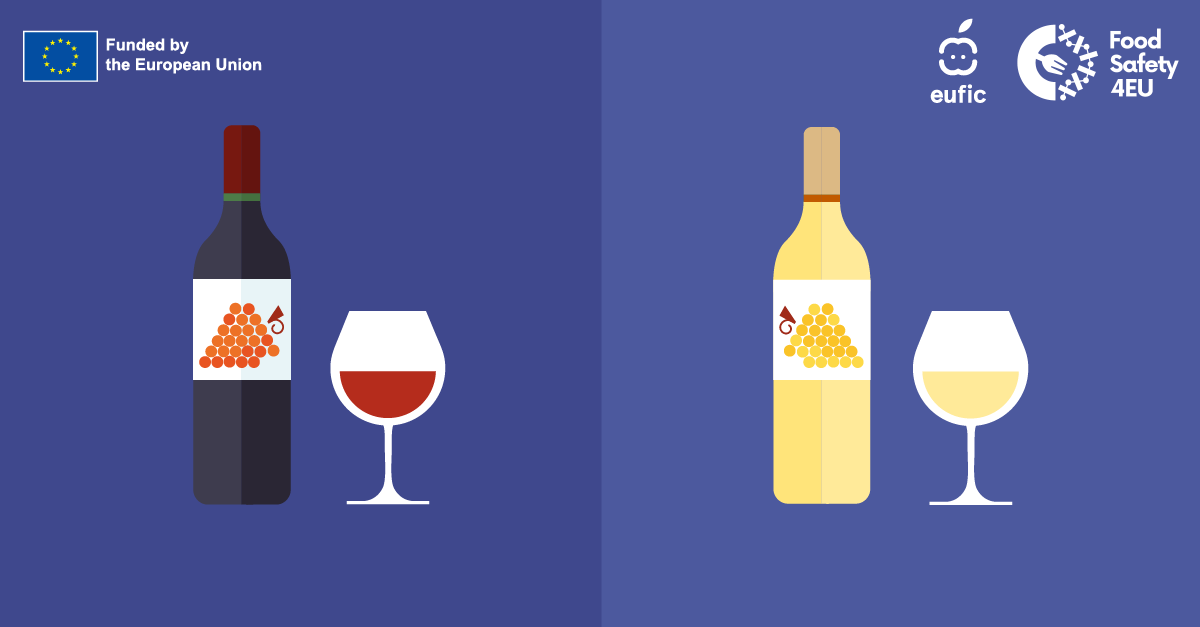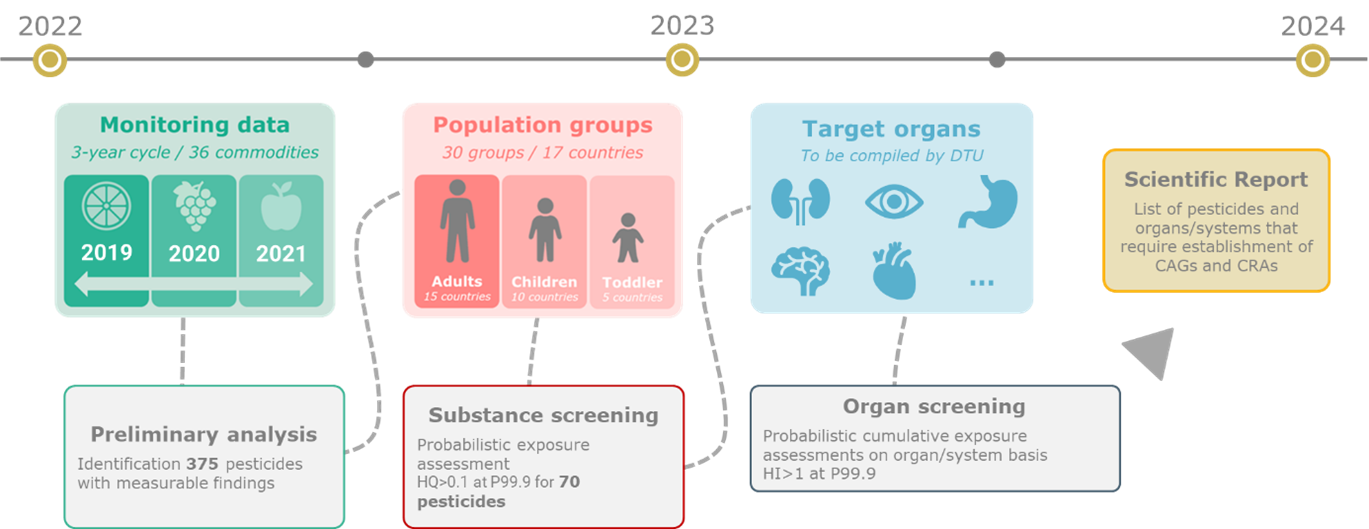What are sulphites in wine and are they bad for you?

Read in other languages: FR | IT | DE | ES
Wine is a popular alcoholic beverage with consumption reaching to almost fifteen litres per person just last year. However, for some it may not be all sunshine and rainbows, complaining later from headaches, stomach pains, hives, and other unpleasant side effects. The sulphites in wine are often blamed for these reactions. But are sulphites actually the cause? Here is what you need to know about sulphites in wine.
What are sulphites and why are they added to wine?
Sulphites – sometimes spelled “sulfites” – are inorganic salts that are widely used as food additives. They occur in many things, including our own bodies and in many foods, either added during the processing stage or naturally occurring as a result of fermentation. All wine, whether it has added sulphites or not, contain sulphites.1 Sulphites in wine are used to stop fermentation at a specific point in the winemaking process. Besides, they function as preservatives to prevent spoiling and oxidation and as protection from bacteria. All in all, sulphites help to maintain the freshness and flavour of wine and prolong its shelf life.1,2
Sulphites are not only present in wine, but they also occur in many dried fruits like golden raisins, apricots, and prunes, and in dried vegetables and potatoes, gravies, and lemon juice.3 In the European Union, sulphites are classified as a food additive and regulations are in place to determine how and when it can be added to foods. If a product contains more than 10 parts per million (ppm) of sulphites, which is equal to 10 milligrams per kilogram or 10 milligrams per litre of sulphites, the words “contains sulphite” must be clearly stated on the label. You can also recognize sulphites on food labels by their E-numbers (E220 to E228).4
How much sulphites are in wine?
Not all wines have the same amount of sulphites. Generally, the sulphite content in white and sweet wines is higher compared to that in rosé, red and dry wines. However, as mentioned before, sulphites are not only found in wine, but they are also present in many other foods, sometimes in concentrations up to 10 times higher! Whereas dried apricots can contain up to 2000 milligrams per kilogram of sulphites, white and rosé wines typically can only contain up to 200 milligrams per litre of sulphites and red wines only up to 150 milligrams per litre.4 People may assume that organic wines are sulphite-free, however, according to European legislation organic wines still can contain added sulphites, although it is usually less compared to non-organic varieties.5,6
| High sulphite level foods (>100 mg/L or mg/kg sulfites) | Red wine (max. 150 mg/L), white wine (max. 200 mg/L), rosé (max. 200 mg/L), molasses, sauerkraut, lemon/lime juice, dried fruit (excluding dark raisins and prunes) |
| Moderate sulphite level foods (50-99.9 mg/L or mg/kg sulfites) | Dried potatoes, grape juice, wine vinegar, gravies, sauces, fruit topping, maraschino cherries |
| Low sulphite level foods (10-49.9 mg/L or mg/kg sulfites) | Pectin, fresh shrimp, corn starch, corn syrup, pickles, frozen potatoes, imported jams, maple syrup |
Are sulphites bad for you and should you avoid them?
One common misconception about sulphites in wine is that they cause headaches, hangovers, and other unpleasant side effects.7 However, in most cases this is not true. Sulphites can aggravate asthma symptoms in a small number of people (3-10% of asthmatics experience adverse reactions following sulphite consumption), however, this is usually linked to foods and drinks that contain far more sulphites than wine.8 Furthermore, other compounds in wine, such as histamine, tyramine, flavonoids, and the alcohol content of the wine itself, may also play a role in causing the adverse effects.9
Usually, the adverse reactions to sulphites in wine are referred to as a sulphite allergy because of the allergy-like symptoms. However, officially it is a hypersensitivity since the immune system is not involved with reactions to sulphites.10 Anaphylaxis , the most dangerous type of allergic reaction, following sulphite consumption has been documented, however, it is extremely rare. The most common adverse reaction for people who are hypersensitive to sulphites include flushing, fast heartbeat, wheezing, hives, dizziness, stomach upset and diarrhoea, collapse, tingling or difficulty swallowing.8 If you think you are sensitive to sulphites or any other food ingredient, the best advice is to check with your doctor or with a dietician.
According to the European Food Safety Authority (EFSA), sulphites are generally regarded as a safe additive for consumers. Sulphite intakes above the acceptable daily intake (ADI) of 0.7 mg sulphites per kilogram of bodyweight per day have been observed in European populations. To put this into context, it takes approximately 1.5 glasses of white wine for an average person of 70 kg to take you over the ADI (taking into consideration the highest permitted dose of sulphites for wine). However, the EFSA currently does not raise any concerns for (long-term) health effects.4
The bottom line
Sulphite is a well-studied food preservative important to maintain food colour, prolonging shelf-life, and preventing the growth of bacteria. All (organic) wine, whether it has added sulphites or not, contain sulphites. Numerous scientific evaluations have concluded that sulphites are safe to eat for the majority of consumers.
References
- Taylor, S. L., Higley, N. A., & Bush, R. K. (1986). Sulfites in foods: uses, analytical methods, residues, fate, exposure assessment, metabolism, toxicity, and hypersensitivity. Advances in food research, 30, 1-76.
- Roberts, A. C., & McWeeny, D. J. (1972). The uses of sulphur dioxide in the food industry: A review. International Journal of Food Science & Technology, 7(3), 221-238.
- Lester, M. R. (1995). Sulfite sensitivity: significance in human health. Journal of the American College of Nutrition, 14(3), 229-232.
- EFSA Panel on Food additives and Nutrient Sources added to Food (ANS). (2016). Scientific Opinion on the re‐evaluation of sulfur dioxide (E 220), sodium sulfite (E 221), sodium bisulfite (E 222), sodium metabisulfite (E 223), potassium metabisulfite (E 224), calcium sulfite (E 226), calcium bisulfite (E 227) and potassium bisulfite (E 228) as food additives. Efsa Journal, 14(4), 4438.
- McCarthy E, Ewing-Mulligan M (2012). Wine for dummies (5th ed.). Hoboken, N.J.: Wiley. ISBN 978-1-118-28872-6
- Regulation, E. U. (2012). Commission implementing regulation (EU) No 203/2012 of 8 March 2012 amending regulation (EC) No 889/2008 laying down detailed rules for the implementation of council regulation (EC) No 834/2007, as regards detailed rules on organic wine. Official Journal of the European Communities, L, 71, 42.
- Randhawa S, Bahna SL (2009). “Hypersensitivity reactions to food additives”. Current Opinion in Allergy and Clinical Immunology. 9 (3): 278–83. doi:10.1097/ACI.0b013e32832b2632.
- Vally, H., & Misso, N. L. (2012). Adverse reactions to the sulphite additives. Gastroenterology and hepatology from bed to bench, 5(1), 16.
- Panconesi, A. (2008). Alcohol and migraine: trigger factor, consumption, mechanisms. A review. The journal of headache and pain, 9(1), 19-27.
- Government of Canada. (2017). Sulphites priority allergens 2017. Retrieved from 2017-sulphites-sulfites-eng.pdf (canada.ca)
This article was produced in collaboration with European Food Information Council (EUFIC), as part of a joint food additive campaign.
Latest Articles

Towards AI-driven emerging Risk Assessment: a multi-stakeholder perspective
The EU Food Safety Platform: a journey from Bari to Brussels and beyond

Towards holistic, AI-driven emerging risk assessment: catching stakeholders’ needs in Living Labs

Protecting public health: understanding the importance of cumulative risk assessment of pesticides

SCAR consultation workshop on Sustainable Food Systems: highlights from EU FOOD SAFETY PLATFORM

Pioneering advances in the EU Food Safety System: highlights from the first EU Food Safety Forum



